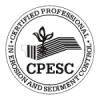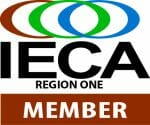Do your products and services manage, prevent, or minimize pollution? Is environmental regulation a big driver for your business?
Then your marketing probably includes, as it should, a bunch of dry facts and numbers.
But does your marketing material show enough proof that your solutions work? It’s a simple point of difference you can leverage.
All too often, however, it’s a missed opportunity that leaves your potential clients wanting more.
What if you could present both hard facts AND undeniable proof so persuasively that potential clients are compelled to know more? A way that shows your solution is the ONLY one that matters.
How? The answer is surprisingly simple.
If you have a knack, you can do it yourself. But a professional copywriter can help you transform dull facts into captivating stories, highlight happy customers, and entice new clients to contact you.
This post outlines how to do it.
Your Marketing Secret Weapon

To keep up to date in their industry, your prospects follow niche trade and media publications. They want, and need, to discover new trends, product options, and solutions.
These outlets, both digital and print, offer a continuous supply of product knowledge and insight. Some provide opportunities to connect with professional peers through sponsored events.
Here’s the simple secret: publish articles about your products and services in trade magazines and industry media outlets.
For the right industry publications, success stories are a great way to reach and influence new and undecided prospects. And two compelling ways to do this are with technical reports (e.g. white papers) and case studies.
In fact, according to research by the Content Marketing Institute, the top 2 most effective types of B2B content marketing in 2018 were case studies and white papers. Further, a study by Marketing Charts found that case studies were the most successful tactic to convert and accelerate leads at later stages of the sales funnel.
They work for two reasons:
- They cast a wide net and introduce your products and services to a qualified audience you have not yet met in your industry, and
- Supply fodder to prospects that may already know you and are looking for reasons to trust and buy from you.
Here is where a good copywriter or technical writer can save you time and headaches. With a little research, you can produce fresh, original material, and a powerful, engaging story that sells your company and promotes trust.
Industry Technical Reports and White Papers
A well-written technical report is both persuasive and educational. It gives context to a problem, then establishes an argument for a solution. While more in-depth and time intensive to write than a case study, a technical report can gain the attention of serious industry professionals.
A white paper is a soft-sell for your products and services. It can be simple and relatively short, as with this white paper made up of 10 best practices in managing data.
Or it can be longer, involve a host of graphics, and work through complex concepts. Here’s an example of one that is quite long and complex, promoting a circular water economy.
Both are effective and speak to their target industry and use appropriate language their audience understands.
Here’s an example of a media outlet white paper covering the erosion and sediment control requirements under the National Pollutant Discharge Elimination System.
White paper topic ideas are endless, but they need to address what’s important to your industry’s clients. Here are a few ideas to get you started:
- New trends for rehabilitation problems and solutions
- Deep dive into a technical subject or process (i.e. slope stabilization, water treatment, discharge compliance)
- Pose examples of solutions that did (or didn’t) work
- Focus on a topic your company has broad or specific expertise in
- Impacts of new regulatory issues and ways to ensure compliance
- Outline the return on investment and business benefits of solutions
- Clarify subjects and topics you know are confusing to your clients and customers
- Compare solution options to problems you help your clients overcome
White papers can include case studies, but case studies also stand alone. And there are many different styles of writing and presenting case studies.
Compelling Case Studies
As consumers, we are always looking for “proof” and “testimonials” to back up (or refute) the promises made by businesses.
Rather than making claims, case studies can highlight your expertise:
- How your products and services cross over into different industry sectors
- Exceptional achievements or results you’ve obtained
- Private and public partnerships results of grant funds
- Project profiles showing pollutant reduction results
- Explaining the process of how your products or services work
- Incorporating real-world achievements into capability statements
- Describing how your technology achieves superior results
- A compliance problem solved.
Case studies don’t need to be lengthy, although some in-depth case studies can turn into technical papers. Like this one. Many simple case studies have just the bare essentials and are approachable by a broad audience.
Case studies can be written as articles in trade publications, or downloaded from a company website.
Advertorials usually have a hard sell and come with an advertising cost, but can be written as case studies sometimes.
Finally, short summary-style case studies are useful to accompany technical product specifications, like these two examples here and here.
Show Benefits with Client-Experienced Proof
Case studies are like detailed testimonials. They build trust. And people love to hear stories about other people.
When you write about your business through the perspective of happy customers, you influence more people than if you simply tout your benefits.
And well-written stories cast a wide net that captures interest at any stage of the buying cycle.
Imagine your potential clients before you ever meet or speak to them. They are actively seeking solutions to their current and future project challenges. When you publish valuable content that engages their interest and compels them to call or approach you, that’s called inbound marketing.
Content with depth can maintain interest and engagement with your brand over the long-term.
But the only way to do that is by speaking your ideal client’s language.
Paint a Picture Your Audience Understands

Your white papers and technical reports will show your prospects that you empathize with them. You can offer valuable insights into their problems. And you can guide them to workable solutions.
Consider your clients.
A lot of them are engineers and project managers. They need to achieve compliance with state and federal environmental regulations. At the end of the day, for them to become a “happy customer”, your products and services need to deliver their technical and deadline-driven objectives.
Your clients may have high capital investment and long-term equipment rental or maintenance costs. They bear the risk burden of hefty fines and bad press. That means your clients want to see an organized and clear presentation of the solution you offer, including reasonable facts and statistics to back up your claims.
But with case studies, the human story must also be told. Even if just a little bit. It’s the key ingredient that provides the social proof that your stuff works.
We all crave to witness the setbacks, challenges, struggles, and redemption of our fellow peers. It’s what makes us human, and helps us navigate through life.
The bottom line? When your customers compare options, a clear and compelling story will gain and hold their attention, more than dry facts alone.
Where to Put Your Stories
Your Website
Your website is a no brainer for publishing up-to-date content that shows your value. You’ll optimize your website for search engines, too, especially when you commit to posting helpful content consistently.
A good option is to keep a press or news page. It gives you the flexibility to include short posts and press releases, along with links to other online media you’re featured in.
Niche Industry Outlets

Specialist trade publications have newsletters, magazines, journals and blogs. These outlets have a targeted, focused and connected readership and can expand the reach of your marketing strategy. In other words, their subscribers are your potential customers.
Subscribers are highly qualified prospects with a built-in trust of an existing publication. They read to stay abreast of news in the industry. They want to understand new technologies and how to fix their problems. These publications are a kind-of mini, ongoing trade show.
The key is to choose the ones your prospects read, not just the ones that you read.
Trade associations often look for smart article ideas and a steady stream of content for their publications. Content like case studies, project news, featured companies and products, and real-world, relatable stories.
While sponsored content and advertorials cost money, when placed in the right outlet, they can draw attention and gather highly qualified leads.
Both problem-havers and solution-providers are there
There are many industry outlets to choose from: construction, architecture, design, infrastructure, and municipal sectors.
Here’s a link to a search directory of trade associations. https://www.directoryofassociations.com/.
In the erosion, sediment control and water quality industries, the following are just a few I’ve come across recently:
Water Quality, Erosion and Sediment Control Channels
International Erosion Control Association
Construction and Infrastructure Channels
Association of General Contractors
Civil and Structural Engineer Media
American Society of Civil Engineers
Don’t look past local and regional publications. Their readership might include a high percentage of your ideal prospects. If you’re a locally based company, these outlets can be a goldmine of interest. Here is an advertorial and advertisement I wrote for The Land, a weekly Australian newspaper focused on the agricultural community.
And while I’ve been reading a lot on Kindle these days, I still like print publications in the mail. So do others.
Case in point: my International Erosion Control Association Membership puts out Environmental Connection and their SmartBrief newsletter. Their content is a great resource for the industry.
Editorial Calendars
Most publications have article submission deadlines and a list of topics they cover. Same with newspapers. They feature regular topics and areas of expertise that hold their reader’s interest.
So plan to deliver topical content for your industry. When you ensure your ideas are relevant to the publication’s target audience, you have a better chance at acceptance. And develop a content schedule to keep yourself on track.
Once you do your homework, you can reach out to the editor and pitch an idea or two that match the publication’s vibe.
Always Provide Value
Remember, your audience has unique needs and requirements. The more value you provide, the more they will accept you as a guiding voice in their industry.
The end game is to show that you understand your prospects, and offer solutions to their problems.
Education, expertise, and connection lead to both professional respect and more sales.
Subtle Marketing Messages
So how much blatant marketing do you put into your content? That depends.
An advertorial or sponsored content is fair game and gives you leeway to sell hard.
But if you’re sneaking into a feature article, you’ll need to tone down your brand messaging. The story should speak for itself.
Whether you sneak-in or sell-straight, the main goal is to create a feeling in your reader that you’re right for their business.
Here are some signals you can send about what your business brings to the table:
- Cutting edge and effective technology
- Depth of experience in the industry
- Success in solving common, specific, or unusual industry problems
- Support and delivery of outstanding outcomes
- Happy and satisfied customers
- Professional and highly sought-after advice and expertise
- Proven thought leadership
- Deep, practical understanding of environmental regulation and compliance.
Once you’ve published mouth-watering stories that feature your business, it’s time to…
Reach More Customers with Repurposed Content
It pays to rewrite and refurbish the material over time.
If you publish a white paper or case study, you’ll have something new that can (and should) be reused to expand your reach:
- Shorten as a post on your own website
- Invite downloads via an opt-in and create an email list of quality leads
- Provide to prospects at trade shows and events
- Offer to your email list (using a link)
- Have sales staff provide to prospects
- Promote to your target audience on social media
- Use at events and trade shows for presentations, displays, and handouts.
Not sure how to begin?
Tips for Results – Where to Start
Develop your content publishing objectives. Do you want to educate, provide value, or show off a new, smart business offering? Nurture prospects? Stay ahead of your competitors? Gain sales leads?
Start by brainstorming topic ideas. Ask your team and talk to customers. Listen to your existing client’s issues and concerns.
Once you’ve chosen a topic, put together a brief outline and circulate it to your team for feedback. Then take the following steps:
- Speak with a publisher to make sure the topic fits and the audience is right.
- Use target keywords to catch your prospect’s attention and help with internet search engine results
- Include qualifications and experience to build your authority.
- Use headlines and subheads to make your piece easier to scroll.
- While your business has its own unique voice, write for the audience you are trying to reach.
- Edit the final version. Repeat: EDIT FOR READABILITY.
Why not hire a professional copywriter with industry expertise who can take this on for you? They can ensure your strategy is sound, the structure flows, and your messages are clear.
Work with Envirowrite
A professional copywriter can polish your marketing materials and encourage potential prospects to take action.
With 20+ years experience in the environmental industry, the problems facing your clients are not new to me. I understand the real-world industry challenges, underpinning science, compliance headaches, and design and construction issues.
Do you have a story to tell and want to show your true value? Let me help you tell it in a meaningful and compelling way that brings you more interest and sales.



